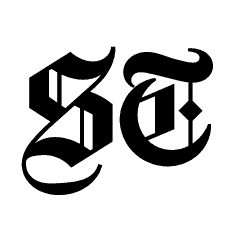Rocket City USA proved to be the perfect location for launching new ideas and connections at the 2024 Trillion Pixel Challenge Workshop Sept. 4 to 5 in Huntsville, Alabama. The Department of Energy’s Oak Ridge National Laboratory and NASA, the National Aeronautics and Space Administration, co-hosted the fourth iteration of this invitation-only event, which brings together geospatial, computational, data and engineering experts around a theme. This year’s gathering focused on how artificial intelligence foundation models can enable geospatial digital twins.
Digital twins are virtual representations of real-life physical structures and systems. The more often these virtual representations can update, the more useful they are. That’s where AI foundation models come in: These large models trained on massive amounts of data can help build global-scale digital twins with strong forecasting and prediction potential. This could help predict weather patterns, natural disaster spread, estimate conflict impact and detect manmade and natural features.
Budhu Bhaduri, director of science programs and partnerships within the National Security Sciences Directorate at ORNL, addressed the invited attendees to open the workshop, noting the significance of the Trillion Pixel Challenge, or TPC. The event is named for the number of pixels it would take to visually represent the surface of the Earth — hundreds of trillion pixels at 5-meter resolution.
“With the Trillion Pixel Challenge, we ask, in 24 hours, what is possible from data infrastructure to AI, to hardware and software architectures, to partnerships in responding to the requirements of the science and operational communities,” Bhaduri said. “When you come here, you recognize that as a whole community of academics, researchers, government labs and private sector, we bring different kinds of strengths and expertise to form an ecosystem that can allow us to move to a solution.”
Dalton Lunga, ORNL GeoAI group lead and senior R&D scientist, described the multimodal workshop as a “modern-day moonshot” for geospatial science and technology. Lunga organized the event with NASA’s Rahul Ramachandran and team members from ORNL and NASA.
“It is clear from this year’s gathering that foundation AI models are a critical component of geospatial digital twins,” Lunga said. “Creating solutions to the trillion-pixel challenges for GeoAI is a complex process whose value will only be appreciated if technology can address the last mile problem — can the AI that powers a geospatial digital twin print a PDF file for a domain scientist in the field? This message came out in several panel discussions.”
The panels included experts who explored use-case and industry requirements to build digital twins, including hardware and software, programmatic structures and data and infrastructure. One panel even challenged the buzzword of digital twins itself, as they picked apart what is truly innovative in the field and what may be attributed to a hype cycle.
May Yuan, a program director at the National Science Foundation, questioned if digital twins are truly a paradigm shift or a reframing of existing technology. “Are we just putting old wine in new bottles?”
Yuan added that the advent of real-time data has pushed digital twin possibilities into greater innovation. Data and infrastructure are so important to digital twins, in fact, it was featured in its own panel session later in the day. Panelists discussed the importance of advancing model and data integration as well as advanced strategies and methods for efficient data collection and collaboration.
“AI requires structured data,” said Kjiersten Fagnan, chief informatics officer at the U.S. Department of Energy Joint Genome Institute. “We have not done enough to think about our data.”
The volume and velocity of data and data gathering for foundation AI models and digital twins requires vast compute resources and software infrastructure.
Trillion Pixel Challenge’s second day kicked off with a spirited discussion on network storage, computing ecosystems and open-source software. This included a presentation on neuromorphic computing applied to GeoAI from Catherine Schuman, assistant professor in the Department of Electrical Engineering and Computer Science at the University of Tennessee. Schuman said this type of computing, which simulates the human brain’s information processing through neural and synaptic structures, can be used alongside high performance computing in GeoAI to accelerate processing. Neuromorphic computing could also create opportunities to process data where it’s being collected, such as within satellites or remote sensing devices.
Bhaduri wrapped up the workshop by saying that ORNL and NASA hoped to strengthen a partnership with the National Geospatial-Intelligence Agency in the coming months and hold the 2025 Trillion Pixel Challenge workshop in St. Louis, Missouri.
“I cannot wait to see the community continue to grow while steering its focus onto programmatic TPC challenges that we can point toward in measuring progress and success,” Lung said.
UT-Battelle manages ORNL for the Department of Energy’s Office of Science, the single largest supporter of basic research in the physical sciences in the United States. The Office of Science is working to address some of the most pressing challenges of our time. For more information, please visit energy.gov/science. — Audrey Carson
This Oak Ridge National Laboratory news article "Trillion Pixel Challenge workshop explores digital twins, foundational AI models" was originally found on https://www.ornl.gov/news


